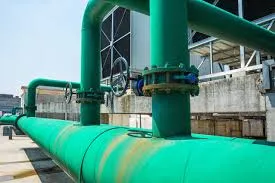
-
 Afrikaans
Afrikaans -
 Albanian
Albanian -
 Amharic
Amharic -
 Arabic
Arabic -
 Armenian
Armenian -
 Azerbaijani
Azerbaijani -
 Basque
Basque -
 Belarusian
Belarusian -
 Bengali
Bengali -
 Bosnian
Bosnian -
 Bulgarian
Bulgarian -
 Catalan
Catalan -
 Cebuano
Cebuano -
 China
China -
 China (Taiwan)
China (Taiwan) -
 Corsican
Corsican -
 Croatian
Croatian -
 Czech
Czech -
 Danish
Danish -
 Dutch
Dutch -
 English
English -
 Esperanto
Esperanto -
 Estonian
Estonian -
 Finnish
Finnish -
 French
French -
 Frisian
Frisian -
 Galician
Galician -
 Georgian
Georgian -
 German
German -
 Greek
Greek -
 Gujarati
Gujarati -
 Haitian Creole
Haitian Creole -
 hausa
hausa -
 hawaiian
hawaiian -
 Hebrew
Hebrew -
 Hindi
Hindi -
 Miao
Miao -
 Hungarian
Hungarian -
 Icelandic
Icelandic -
 igbo
igbo -
 Indonesian
Indonesian -
 irish
irish -
 Italian
Italian -
 Japanese
Japanese -
 Javanese
Javanese -
 Kannada
Kannada -
 kazakh
kazakh -
 Khmer
Khmer -
 Rwandese
Rwandese -
 Korean
Korean -
 Kurdish
Kurdish -
 Kyrgyz
Kyrgyz -
 Lao
Lao -
 Latin
Latin -
 Latvian
Latvian -
 Lithuanian
Lithuanian -
 Luxembourgish
Luxembourgish -
 Macedonian
Macedonian -
 Malgashi
Malgashi -
 Malay
Malay -
 Malayalam
Malayalam -
 Maltese
Maltese -
 Maori
Maori -
 Marathi
Marathi -
 Mongolian
Mongolian -
 Myanmar
Myanmar -
 Nepali
Nepali -
 Norwegian
Norwegian -
 Norwegian
Norwegian -
 Occitan
Occitan -
 Pashto
Pashto -
 Persian
Persian -
 Polish
Polish -
 Portuguese
Portuguese -
 Punjabi
Punjabi -
 Romanian
Romanian -
 Russian
Russian -
 Samoan
Samoan -
 Scottish Gaelic
Scottish Gaelic -
 Serbian
Serbian -
 Sesotho
Sesotho -
 Shona
Shona -
 Sindhi
Sindhi -
 Sinhala
Sinhala -
 Slovak
Slovak -
 Slovenian
Slovenian -
 Somali
Somali -
 Spanish
Spanish -
 Sundanese
Sundanese -
 Swahili
Swahili -
 Swedish
Swedish -
 Tagalog
Tagalog -
 Tajik
Tajik -
 Tamil
Tamil -
 Tatar
Tatar -
 Telugu
Telugu -
 Thai
Thai -
 Turkish
Turkish -
 Turkmen
Turkmen -
 Ukrainian
Ukrainian -
 Urdu
Urdu -
 Uighur
Uighur -
 Uzbek
Uzbek -
 Vietnamese
Vietnamese -
 Welsh
Welsh -
 Bantu
Bantu -
 Yiddish
Yiddish -
 Yoruba
Yoruba -
 Zulu
Zulu
frp tank
Understanding FRP Tanks Advantages and Applications
Fiber Reinforced Polymer (FRP) tanks have emerged as a pivotal solution in various industries due to their lightweight, durable, and corrosion-resistant properties. These tanks are constructed from a composite material that consists of a polymer matrix reinforced with fibers, typically glass, carbon, or aramid. The unique characteristics of FRP tanks make them preferable in numerous applications ranging from chemical storage to water treatment.
.
Another noteworthy benefit is the lightweight nature of FRP tanks. This characteristic simplifies installation, reducing both labor costs and time compared to traditional tank systems. Moreover, the lightweight design allows for easy transportation, making it feasible to relocate tanks as operational needs change. In addition, the design flexibility offered by FRP manufacturing enables the creation of tanks in various shapes and sizes, tailored to meet specific storage requirements.
frp tank

Furthermore, FRP tanks exhibit excellent thermal insulation properties, which are crucial for specific applications, such as storing temperature-sensitive materials. The insulation helps to maintain the desired temperature, thereby preventing alterations in the quality of the stored products. This thermal efficiency, coupled with the strength provided by the composite materials, ensures that industries can safely store a variety of substances without significant risk of degradation.
The construction of FRP tanks also encompasses advanced engineering techniques that enhance their structural integrity. The materials used in FRP construction can withstand significant pressure, making these tanks suitable for storing liquids at varying depths and densities. This capability is vital for industries that work with bulk storage of liquids, including agricultural sectors, where fertilizers and pesticides are commonly stored.
Environmental factors also play a crucial role in the appeal of FRP tanks. By utilizing composite materials that are often recyclable, manufacturers can produce tanks with a reduced carbon footprint. Furthermore, the durability and longevity of FRP tanks mean less waste is generated over time, aligning with the growing focus on sustainable industrial practices.
In conclusion, FRP tanks represent a modern solution tailored to meet the demands of various industries. Their corrosion resistance, lightweight construction, thermal insulation, and structural integrity make them an attractive option compared to traditional tank materials. As industries continue to evolve, incorporating advanced materials like FRP into storage solutions not only enhances operational efficiency but also aligns with sustainability goals. With increasing awareness of these benefits, the future appears bright for FRP tanks in applications across diverse sectors. As businesses seek to innovate and improve their storage methods, FRP tanks will undoubtedly play a crucial role in shaping the future of material containment.









